Gaudí poker
Gaudí poker playing cards illustrated by Josep Opisso, Spain, c. 1992.
Published c.1992 by Naipes Comas, this pack celebrates Antoni Gaudí of Catalonia (1852-1926), considered the quintessential modernist architect of the 20th century. His masterpiece, the still-incomplete Sagrada Família, is the most-visited monument in Spain. Between 1984 and 2005, seven of his works were declared World Heritage Sites by UNESCO.
Each of the suited cards has a finely detailed illustration – not a photograph – of an architectural, design or decorative element from one of Gaudí’s buildings by Barcelona artist Josep Opisso (b. 1935). Much of the Spade suit is devoted to the Sagrada Família. The jokers take the form of two information cards about the artist, while a third card offers illustrations of fifteen of Gaudí’s architectural wonders. The card reverse reproduces multiple copies of the artist’s signature. See the box►
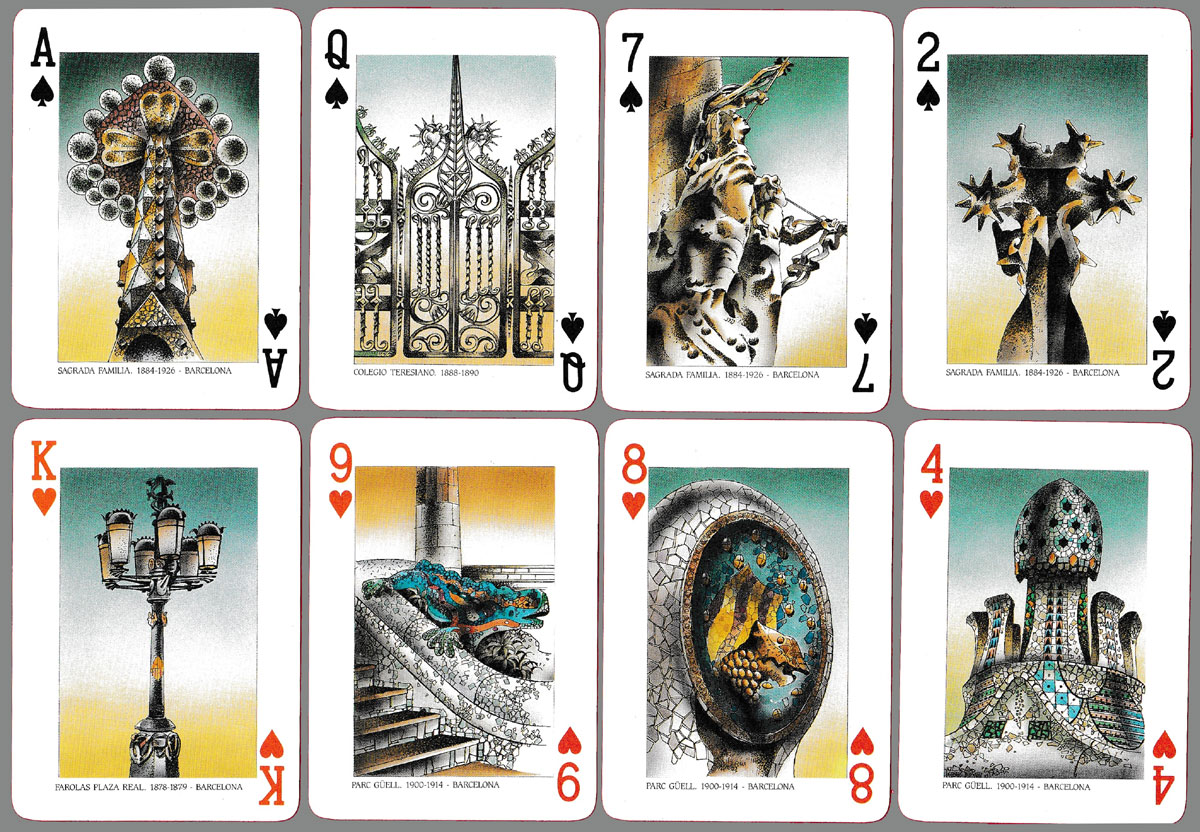
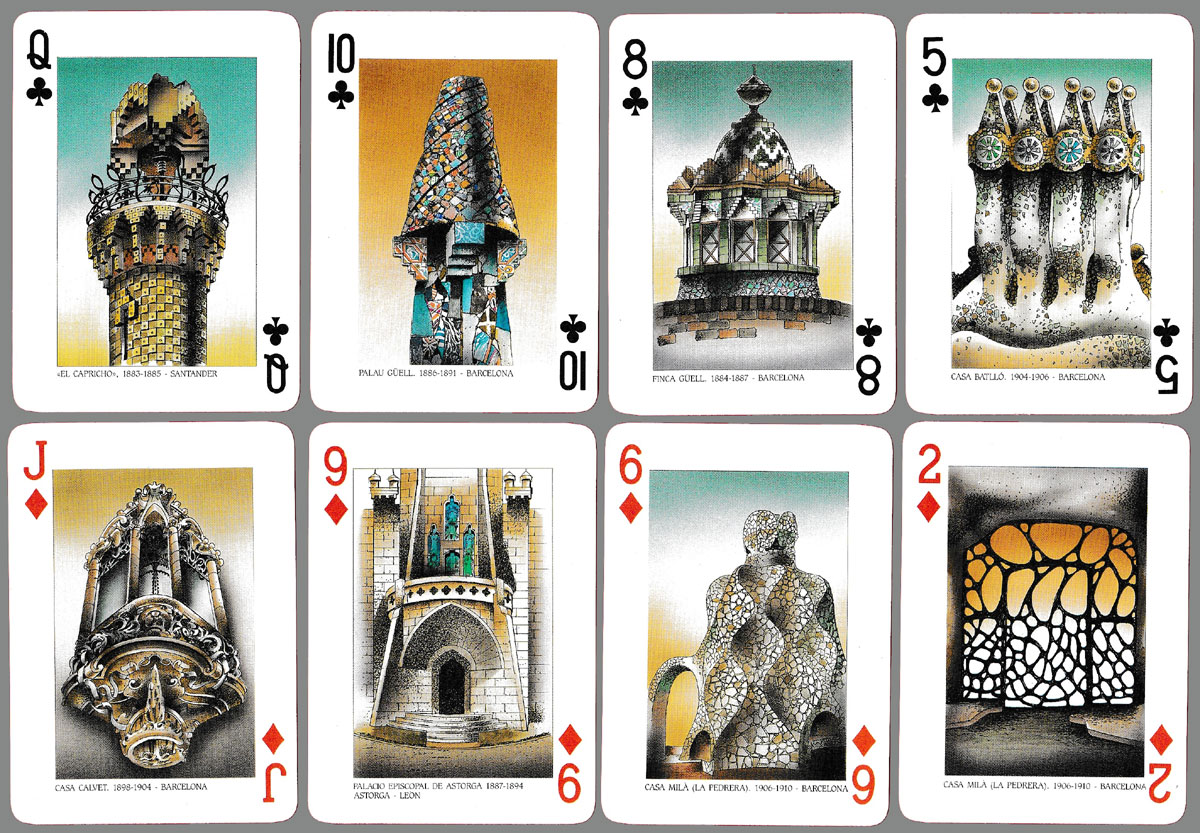
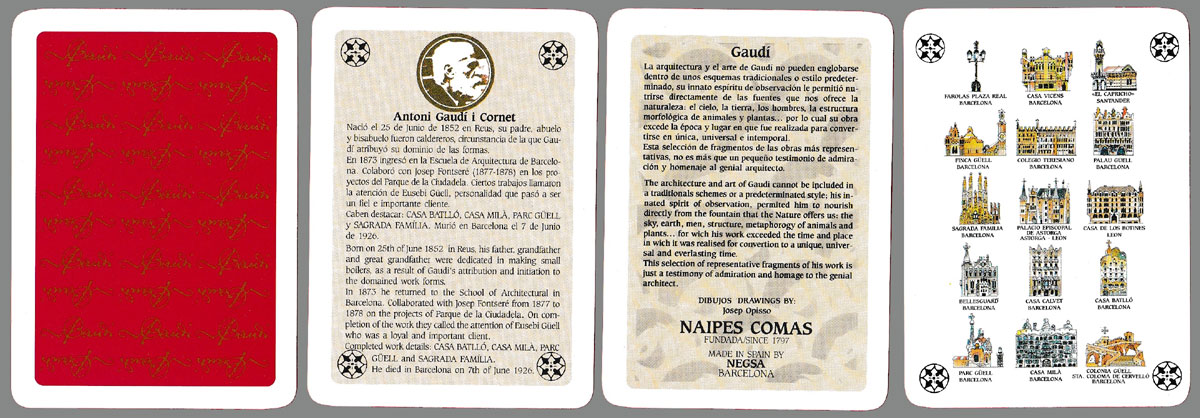
Above: Gaudí poker playing cards illustrated by Josep Opisso, published by Naipes Comas, Spain, c. 1992.
By Peter Burnett
United Kingdom • Member since July 27, 2022 • Contact
I graduated in Russian and East European Studies from Birmingham University in 1969. It was as an undergraduate in Moscow in 1968 that I stumbled upon my first 3 packs of “unusual” playing cards which fired my curiosity and thence my life-long interest. I began researching and collecting cards in the early 1970s, since when I’ve acquired over 3,330 packs of non-standard cards, mainly from North America, UK and Western Europe, and of course from Russia and the former communist countries.
Following my retirement from the Bodleian Library in Dec. 2007 I took up a new role as Head of Library Development at the International Network for the Availability of Scientific Publications (INASP) to support library development in low-income countries. This work necessitated regular training visits to many sub-Saharan African countries and also further afield, to Vietnam, Nepal and Bangladesh – all of which provided rich opportunities to further expand my playing card collection.
Since 2019 I’ve been working part-time in the Bodleian Library where I’ve been cataloguing the bequest of the late Donald Welsh, founder of the English Playing Card Society.

Leave a Reply
Your Name
Just nowRelated Articles

Monuments de Paris
‘Monuments de Paris’ souvenir playing cards produced by Heraclio Fournier, c.1964.
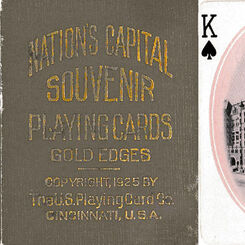
Nation’s capital souvenir playing cards
Nation’s capital souvenir playing cards published by the United States Playing Card Company, USA, 19...
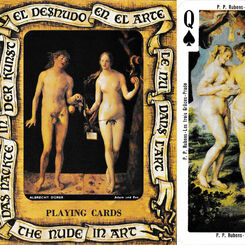
El Desnudo en el Arte
The Nude in Art / El Desnudo en el Arte, Spain, 1977 (reprint 1990)

Naipes Expo ’92
Naipes Expo ’92 souvenir playing cards manufactured by Naipes Comas, 1992.

Baraja Fiesta Taurina
‘Baraja Fiesta Taurina’ bullfight playing cards published by Heraclio Fournier, Spain, 1975.

Secretos de Oriente
Secrets of the Far East playing cards featuring the designs of Violeta Monreal , Spain, c. 1991.

Museo del Prado
Museo del Prado: Pintores y familias reales / Painters and royal families playing cards.

España Imperial
España imperial / Imperial Spain playing cards with artwork by Serny, published by Heraclio Fournier...

Medieval Life playing cards
‘Medium Aevum’ (Medieval Life) playing cards designed by Violeta Monreal, published by Heraclio Four...
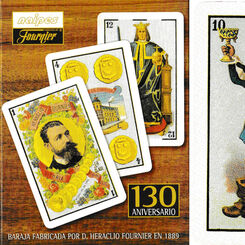
Naipes Heraclio Fournier 130th Anniversary
Baraja conmemorativa del 130 aniversario de naipes Heraclio Fournier (1868-1998) Spain, 1998.

Gaudí playing cards
Gaudí playing cards with photography by Ramon Manent, Spain, 2002.

Ases de la pintura / Masters of painting
Ases de la pintura / Masters of painting playing cards made by Naipes Comas, Spain, c.1990.
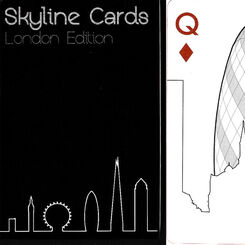
Skyline cards: London edition
Skyline cards: London edition, featuring iconic architecture, United Kingdom, c. 2018.

Rasta playing cards
Rasta playing cards celebrating the Rastafari religion.
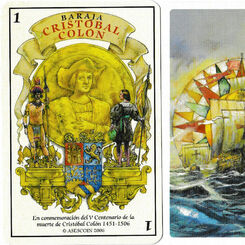
Christopher Columbus playing cards
“Baraja Cristóbal Colón” commemorating the 500th anniversary of the death of Christopher Columbus.

Baraja El Quijote
Baraja El Quijote, facsimile of original deck designed by E. Pastor, reprinted by Naipes Heraclio Fo...

Cadiz-Catalan style pack
High-quality standard designs by Sebastián Comas y Ricart, Barcelona, Spain, 1896.
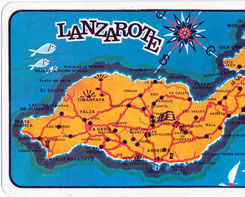
Lanzarote Souvenir
Souvenir of Lanzarote playing cards by NEGSA (Naipes Comas).

Sebastian Comas y Ricart, Barcelona
“El Ciervo” standard Catalan-type pack made in Barcelona by Sebastian Comas y Ricart, c.1905-10.
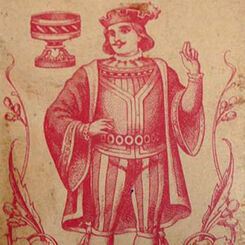
Naipes Comas
Naipes Comas 1797-1992.
Most Popular
Our top articles from the past 60 days


 Your comment here. Your comment here. Your comment here. Your comment here. Your comment here. Your comment here. Your comment here. Your comment here. Your comment here. Your comment here. Your comment here. Your comment here. Your comment here. Your comment here. Your comment here. Your comment here. Your comment here. Your comment here. Your comment here. Your comment here. Your comment here. Your comment here. Your comment here. Your comment here. Your comment here. Your comment here. Your comment here. Your comment here. Your comment here. Your comment here. Your comment here. Your comment here.
Your comment here. Your comment here. Your comment here. Your comment here. Your comment here. Your comment here. Your comment here. Your comment here. Your comment here. Your comment here. Your comment here. Your comment here. Your comment here. Your comment here. Your comment here. Your comment here. Your comment here. Your comment here. Your comment here. Your comment here. Your comment here. Your comment here. Your comment here. Your comment here. Your comment here. Your comment here. Your comment here. Your comment here. Your comment here. Your comment here. Your comment here. Your comment here.




















